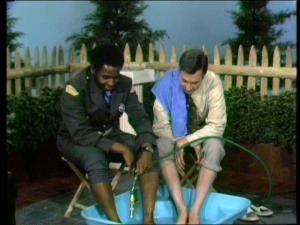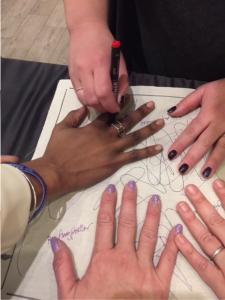I love it when the perfect sermon illustration comes along just at the right time.
I love it when that happens.
However, that most certainly did not happen the third week of Lent, when I struggled and struggled to find a way to engage the congregation and the text in a way that had some sort of meaning.
Part of the problem, of course, was, honestly, the passage.
Jesus and the Samaritan woman have this amazing encounter, full of layers and layers of meaning, with potentially thousands of deep and meaningful sermons to be written.
Well, that may be. But, for the life of me, I couldn’t find an illustration to bring the point home: we confess that sometimes our hearts are hard.
After hearing my lament my friend Carol told me about a story that she’d heard once. It is a moving story from a painful time in American history. In 1957 Little Rock Central High School began the process of racial integration, and a picture taken by photographer Will Counts seemed to capture the hatred, fear and pain of the times. Carol told me that the two girls who were the focus of the photo: the angry white girl yelling at the young black woman, later reconciled, a little step toward healing a gaping wound.
It was an amazing story, surely illustrating our Lenten focus of confessing for the times our hearts are hard and resistant to the work of God’s Spirit.
It was, yeah, that is, until you read the rest of the story.
This Vanity Fair article tells the whole story-all the way to the end. Yes, there was hatred. Yes, there was reconciliation and a softening of hearts. But the happy Disney ending didn’t last. The reconciliation didn’t lead to life-long friendship. It wasn’t all nice and pretty forever and ever and ever. After an initial reconciliation and attempt at forgiveness, these two lives that had intersected a second time again went their separate ways.
So, I wondered: is it okay to tell part of the story even though the rest of the story didn’t turn out how we all would have wished?
A good story is like gold to a preacher, but when you use a good story your people trust you to offer them something they can take their imaginations and wander around in. If I told the first part of the story without the last part was I violating trust?
I decided in the end . . . not. I decided it was worth telling the story anyway, even though the end wasn’t as pretty as, say, Cinderella’s. The reasons I decided to tell it were: first, the softening of hard hearts was real. There was repentance and forgiveness and a new way of seeing the world. And that story is always worth telling.
Second, it all didn’t work out in the end. And . . . that’s probably the experience of most of us sitting in worship. Good intentions with the reality of life mixed in–the very real experience of life, not easy or neat but messy and hard.
But . . . still worth working toward the promise of redemption.
Because even if it happens just a little bit, it’s a story worth telling.
And . . . messy resolution is not the end anyway. God has a grand plan of reconciliation, and, really, that’s the rest of our story, isn’t it?












